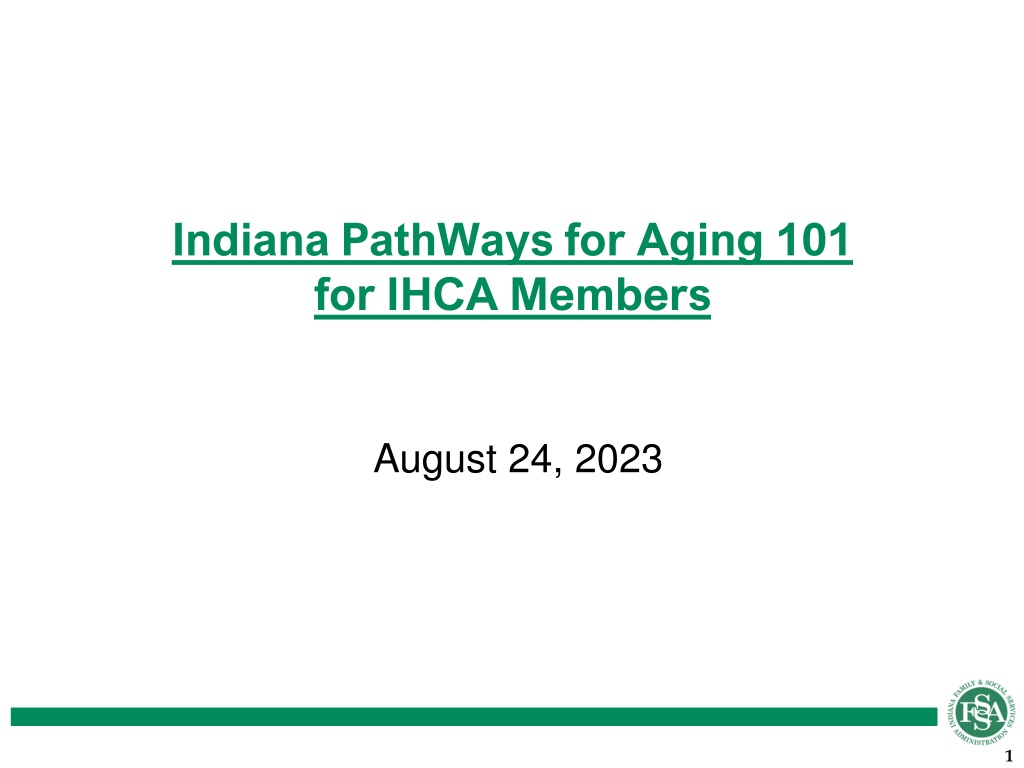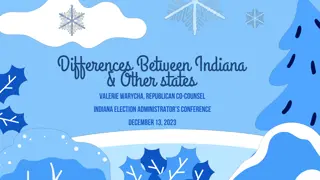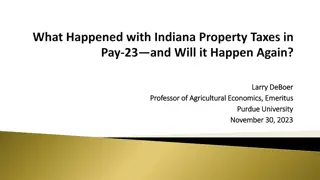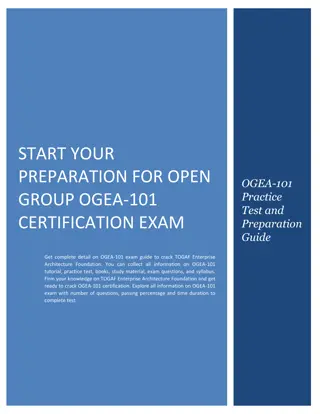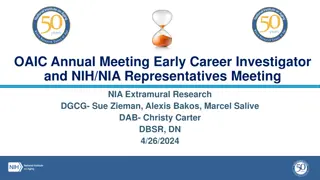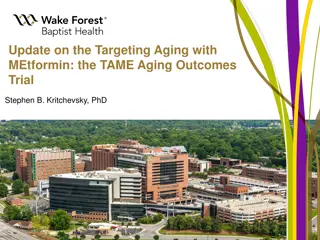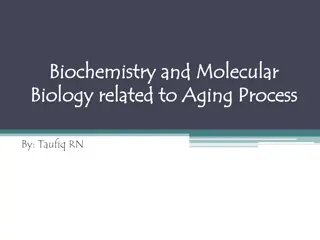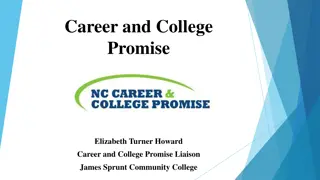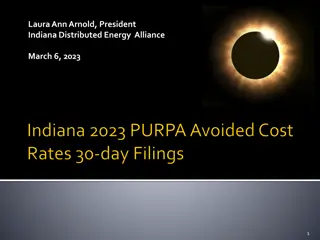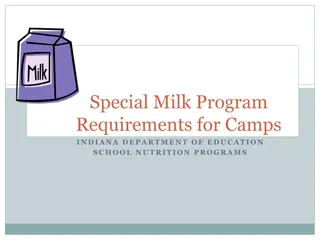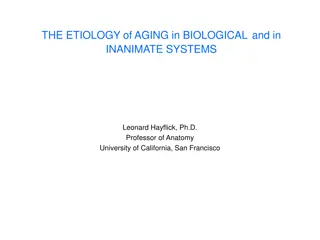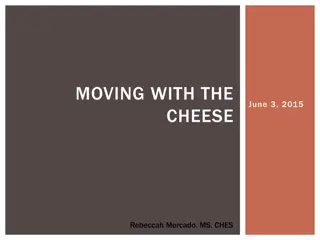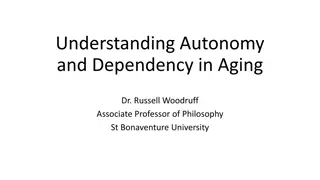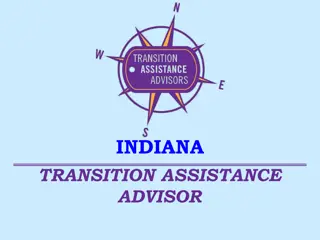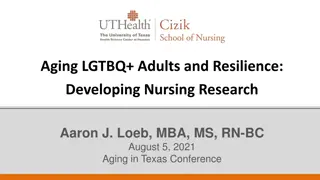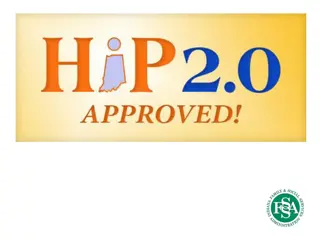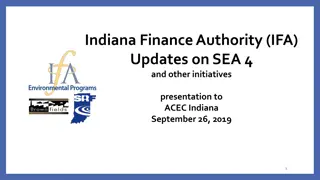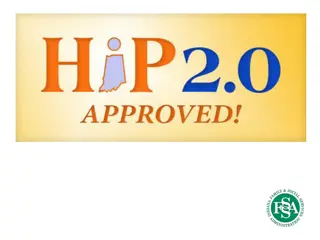Indiana PathWays for Aging 101 for IHCA Members
Indiana Pathways for Aging is a stakeholder-driven initiative aiming to reform long-term services and supports in Indiana. Key topics covered include program goals, enrollment processes, future stakeholder engagement, and the transition to person-centered care. The Pathways Codesign Workgroup plays a crucial role in shaping and implementing the program through stakeholder collaboration.
Download Presentation

Please find below an Image/Link to download the presentation.
The content on the website is provided AS IS for your information and personal use only. It may not be sold, licensed, or shared on other websites without obtaining consent from the author.If you encounter any issues during the download, it is possible that the publisher has removed the file from their server.
You are allowed to download the files provided on this website for personal or commercial use, subject to the condition that they are used lawfully. All files are the property of their respective owners.
The content on the website is provided AS IS for your information and personal use only. It may not be sold, licensed, or shared on other websites without obtaining consent from the author.
E N D
Presentation Transcript
Indiana PathWays for Aging 101 for IHCA Members August 24, 2023 1
Topics Covered What is Indiana PathWays for Aging? Population to be served Program overview Program goals/quality goals Who the MCEs are How people will enroll Key features of the program MCE Readiness Future stakeholder engagement Appendix - Definitions Please note: This is not the full and final Indiana PathWays for Aging operational training, which will be available in September 2023. Please check with OMPP Care Programs for PathWays training materials for staff, stakeholders, and vendors. 2
Where We Started & Aiming for the Future Indiana Current State Indiana Future State Enhanced Home & Community Based Service Offerings Medicare Integration Fee-For- Service Medicaid Strong State Oversight Comprehensive Care Coordination - Including with Aligned Medicare Provider Protections MLTSS Incorporation of Member & Caregiver Comprehensive Provider Network Medicare Voice High-Quality, Indiana- Based Health Plan Administration 4
Pathways for Aging Goals Person-Centered Services and Supports Develop service plans and deliver services in a manner that is person-centered, participant-driven, holistic, involves caregivers, and addresses SDOH. 1 Ensuring Smooth Transitions Ensure continuity of care and seamless experiences for participants as they transition into the MLTSS program or among providers, settings, or coverage types. 2 Access to Services (Participant Choice) Assure timely access to appropriate services and supports to enable participants to live in their setting of choice and promote their well-being and quality of life. 3 5
Purpose of Pathways Codesign Stakeholder engagement has been and continues to be an essential part of the larger long-term services and supports reform effort in Indiana with over 600 meetings held to date The Pathways codesign workgroup is the first stakeholder group FSSA convened at the end of 2020 when the reform project began The purpose of gathering this group of stakeholders was to inform the design, development, and implementation of the Indiana Pathways for Aging program. There have been four phases of the engagement. Our engagement promotes buy-in and support for the reform effort and ensures organizations are prepared to have a successful transition to Pathways Codesign Workgroup Goals: Share information and keep key parties up-to-date Receive feedback, answer questions, and dispel confusion or myths Build support for the program Assist stakeholders in navigating change 6
Stakeholder Engagement Overview Who are our "stakeholders"? Aging Hoosiers receiving Medicaid, their families and caregivers; organizations representing aging individuals and individuals with disabilities; providers; trade organizations; and other interested parties 2+ years of surveying and community conversations Indiana Pathways for Aging Scope of Work o Years' worth of feedback from stakeholders o Model contract language from other states o National subject matter expertise o Federally mandated requirements Stakeholders reviewed excerpts from the Pathways SoW; care management manual; MCE reporting manual Ongoing updates on readiness review 92% Meetings with stakeholders 600+ 10 Peer-state programs reviewed in detail of stakeholder considerations fully or partially incorporated into Pathways Scope of Work 7
States with MLTSS 25 states have successfully used MLTSS as a means promote inclusion, ensure quality and efficiency, and achieve HCBS rebalancing. 8
PathWays Milestones Design Program and Procure Health Plans ( 21- 22) 2021 Co-designed program with stakeholders over the course of a year to release a Request for Procurement in June 2022. Health plans bid on the RFP for a contract with the state through a competitive process facilitated by the Indiana Department of Administration Implementation and Readiness ( 22) FSSA conducts systematic review of staffing, policies, processes, documents, subcontracts, system capabilities and provider network to ensure state and health plans are ready for the program launch 2022 Award Health Plan Contracts and Onboard ( 23- 24) Contract recommendations announced to health plans in March 2023 Continue readiness review activities to ensure state and health plans are ready for the Pathways program launch 2023 2024 Health Plans Contracts Signed ( 24) Contracts will be finalized in early 2024 with plans who completed readiness D-SNP statewide operations and 3 Plan Benefit Package (PBP) structure to begin in January 2024 Program Go-Live ( 24) Program to launch in summer 2024 9
Who Is Eligible for PathWays? Who is eligible for the Pathways program? Indiana s Medicaid enrollees who meet the following requirements: 60 years of age and older Eligible for Medicaid based on age, blindness, or disability Also eligible for Medicare Have limited income/resources Can be in a nursing facility Can be receiving hospice services Can be receiving long-term services/supports in a home or community-based setting Who is NOT eligible for the Pathways program? Anyone aged 59 and under Partial benefit dually-eligible (QMB-only, SLMB-only, QI, or QDWI) members DDRS waiver recipients Program of All Inclusive Care for the Elderly (PACE) members Room and Board (RCAP) members End Stage Renal Disease (ESRD) 1115 members Breast and cervical cancer (MA-12) eligible members Individuals who are TBI waiver recipients TBI out of state placements I/DD residents of intermediate care facilities (ICF) (i.e., group homes) Emergency services only (ESO) members Family planning only members Members with MAGI eligibility in HIP or HHW PathWays is mandatory for most eligible populations (meaning the individual cannot be served in fee-for- services). However, the following individuals may opt-in to PathWays but are not required to participate: American Indians and Alaska Natives Individuals on hospice when entering the program Additional Level of Care Eligibility is necessary to access the long-term services and supports in PathWays: This eligibility is conducted by State partners other than the MCEs (AAAs, Maximus/Ascend) Must be found eligible to have long-term nursing facility care or home-and-community-based services (HCBS) 11
Medicaid & Medicare Dual-Eligible Population Siloed Connected Integrated 12
Source of Member Enrollment At Go Live PathWays will be available to people currently enrolled in Indiana Medicaid -Individuals enrolled in Hoosier Care Connect who are age 60 or older will transfer to Pathways (14% of anticipated PathWays Enrollment) -Individuals enrolled in FFS who are age 60 or older and not exempt will transfer to PathWays (86% of anticipated PathWays Enrollment) This includes individuals that are receiving Home and Community services on a waiver and those that are living in nursing facilities Once Pathways is implemented individuals in HCC and FFS Medicaid will transfer to PathWays when they turn 60, provided they are not exempt New Applicants who are over 60 will enroll in PathWays once their eligibility is determined 13
PathWays Awarded Managed Care Entities (MCEs) On March 1st, 2023 following a competitive procurement process, FSSA and IDOA announced 4 awarded vendors for the Indiana Pathways for Aging program: LTSS Program Experience Indiana D-SNP Experience MCE Medicaid Experience 11.1M members across 26 states/territories Anthem 416K members in 10 states ~40K members 1M members across 5 states Humana 40K members in 3 states ~23K members 4.6M members across 17 states Molina 360K members in 11 states N/A United Healthcare 7.9M members across 32 states + DC 350K members in 10 states + DC ~30K members This table presents an overview of background information about the awarded vendors (listed alphabetically) and does not represent any evaluation criteria. Member enrollment figures are estimates provided by the MCEs as of 2022. 15
Indiana-Focused PathWays Scope of Work Features Innovative enhancements to the SoW include: Transformative quality framework Person-centered integration and coordination of a member s medical, behavioral health, and social needs Seamless experience accessing Medicare and Medicaid benefits Incorporation of member and caregiver voice Supports for informal caregivers New Home and Community Based Service offerings Requirements for high-quality, Indiana-based health plan administration Standardized prior authorization, claims processing, and credentialing processes Comprehensive provider network Continuous service innovation and improvement including housing, workforce development and transportation services 16
PathWays Services Dual Eligible Members Medicare Services* All Members Traditional Medicaid (partial list) Hospital care Labs/tests Surgical care Preventive care Primary care visits Prescriptions Mental health and addiction treatment DME Home health Hospice Dental Vision Hearing aids NEMT Care Coordination An crucial component of the mLTSS program. A future presentation cover in more detail Part A: hospital care, SNF, hospice, labs, surgery, home health Part B: Dr visits, medical, preventive care, DME, mental health (some prescriptions) Part D: prescription drugs Part C: (Medicare Advantage) Includes full Part A and Part B benefits. Most also cover Part D. These plans also have some flexibility to provide additional supplemental benefits like over the counter drugs, transportation, wellness programs, vision or dental services, home delivered meals or other services. 17
PathWays LTSS Services For those individuals with a Level of Care (LOC) making them eligible for LTSS, the following services are included in the benefit package. All members receive comprehensive, person-centered care coordination including duals. Members with Nursing LOC Traditional Medicaid Long Term Care (Nursing Facility) Members with Waiver LOC HCBS Waiver Services** Adult Day Service & Family Care Assisted Living Attendant Care, Self-Directed ATTC, & PDHCS Caregiving Coaching and Behavior Management Service Coordination Community Transition Environmental Modifications & Assessments Home and Community Assistance (FKA Homemaker) Home Delivered Meals Nutritional Supplements Personal Emergency Response System Pest Control Respite Specialized Medical Equipment and Supplies Structured Family Caregiving Transportation Vehicle Modifications 18
Care Coordination & Service Coordination Definition Care Coordination -The Care Coordination Program Plan shall include, but not be limited to, descriptions of how the Contractor shall comprehensively address the following Care Coordination critical elements and their associated factors: Care Coordination Staff Structure, Comprehensive Health Assessments, Individualized Care Plan, Interdisciplinary Care Team, Continuity of Care and Care Transition Protocols. The Contractor s Care Coordination Program Plan and service delivery must contain evidence of person-centered practices. The State strongly encourages a strengths- based approach in all aspects. Service Coordination - In addition to Care Coordination services, all members who are determined Nursing Facility Level of Care (NFLOC) and receive HCBS or institutional LTSS will be eligible for Service Coordination for their LTSS and related environmental and social services. Service Coordination specifically focuses on supporting members in accessing long-term services and support, medical, social, housing, educational, and other services, regardless of the services funding sources. All members receiving Service Coordination will have an assigned Service Coordinator who works with the member s Care Coordinator to ensure cohesive, holistic service delivery. 19
Care Coordination & Service Coordination Definition Care Coordinator - An individual meeting Indiana required residential, education, and/or experience requirements that is assigned to every member with the primary responsibility for coordination of the member s physical and behavioral health, and LTSS services. Service Coordinator - Individuals meeting Indiana residential, educational and/or experience requirements responsible for the development and continuous modification of the Service Plan for members who are receiving LTSS, to establish goals and priorities, comprehensively assess needs, evaluate available resources, and develop a plan of care; and to identify LTSS providers as well as other community resources to provide a combination of services and supports that best meet the needs and goals of the member and informal caregiver(s). 20
Care Coordination: Medicaid and Medicare Alignment To increase alignment for dual-eligible members, MLTSS care coordination requirements will align with CMS guidelines for Medicare Advantage Dual Special Needs Plan (D-SNP) Models of Care (MOC). A dual-eligible member s Care Coordinator will be responsible for coordinating with all Medicare payors, Medicare Advantage plans, and Medicare providers as appropriate to coordinate their care and benefits. For members in an MCE s aligned, companion D-SNP, staff will have access to all of the information needed to coordinate the members dual benefits, and the MCE s systems and business process should support an integrated MLTSS/Medicare approach. Further administrative integration between an MCE s MLTSS program and companion D-SNP is expected to evolve over the life of the MLTSS program. 21
Other Vendors in the PathWays Ecosystem Vendor Name Services Example Member Interaction Enrollment Broker Helps individuals select or change their PathWays MCE An individual gets a letter that they re eligible for PathWays and a number to call to enroll. (Maximus) The EB helps them enroll with an MCE that has the individual s current doctor in its network. An Area Agency on Aging refers an individual to LCAR for an NFLOC assessment as a first step toward receiving waiver services. Level of Care Assessor Representative (LCAR) Assesses whether individuals meet Nursing Facility Level of Care (NFLOC) to qualify for LTSS Sometimes referred to as functional eligibility (Maximus) Dual Eligible Special Needs Plans (D- SNPs), type of Medicare Advantage Plan Cover and coordinate Medicare services, specifically for dual-eligible individuals A D-SNP case manager works with the member s PathWays team to make sure that an individual s transition from a hospital to a short-term skilled nursing facility stay to the home/community goes smoothly. With PathWays, each D-SNP will have an aligned MLTSS Plan (same parent company), to allow for greater coordination between Medicare and Medicaid benefits. 22
Other Vendors in the PathWays Ecosystem Vendor Name Services Example Member Interaction Area Agencies on Aging (AAA) Coordinate, offer, and connect older adults to services to support them in their home and community A family contacts a AAA to get information and resources when they discover that Grandma has been having trouble caring for herself at home. Contracted at a local/regional level with the State to provide Older Americans Act services (Federal program), CHOICE (State program), and waiver services including waiver care management. Like AAAs, ICMs offer A&D waiver care management services today. Under PathWays, MCEs will subcontract with existing A&D care management providers to perform PathWays Service Coordination. Assists members with understanding and navigating their coverage and rights under PathWays Supports members in resolving MCE issues and navigating the grievance and appeal process Also called Beneficiary Support Services as federally required Independent Case Management companies (ICMs) A PathWays member who qualifies for HCBS works with their Service Coordinator (subcontracted through an ICM) on an LTSS-specific Service Plan. Member Support Services (MSS) An MCE denies a PathWays member a service they think they need. The member contacts the MSS to learn what their options are and how to file an appeal. (Vendor TBD in procurement) 23
What is Readiness Review A systematic large-scale review of MCE staffing, policies and procedures, processes, documents, member and provider communication, subcontracts, system capabilities, and provider network to ensure the health plan is prepared in advance of the new contract go live Safeguards that the selected MCE is ready to accept enrollment, provide the necessary continuity of care, ensure access to the necessary spectrum of providers, and fully meet the diverse needs of the population Readiness reviews includes both desk review of MCE documentation as well as onsite demonstrations of MCE capabilities 25
MCE Onboarding FSSA engaged MCEs in proactive onboarding sessions April-June to ensure the MCEs understand the program and prepared for the initiation of readiness review. FSSA agencies and business areas provided an initial 1-hour presentation to the MCEs that included: an introduction to and role of the FSSA business area the expected collaboration for the business area and the MCE training regarding a process/ function the MCE must perform related to Pathways the expectations for the MCEs Documentation such as Policy Manual, Care Coordination Manual, Reporting Manual, assessments, revised Scope of Work, etc. were provided to the MCEs and MCEs provided feedback. MCEs onboarded with more than 25 business areas 26
Future Stakeholder Engagement Commercials Promotional Kits based on different intercessors Fall community activities Member notices Ongoing HCBS and Nursing Facility engagement Member engagement (spring, 2024) 29
Appendix 30
Key Terms and Definitions*: 1) Dually-Eligible Individual (Dual): Dually-eligible individuals are eligible for both Medicare and Medicaid. To be considered dually-eligible, individuals must be: (1) eligible for Medicare Part A and/or Part B; and (2) receiving full Medicaid benefits and/or Medicare Savings Program assistance. 2) Full Benefit Dually Eligible Individuals (FBDEs): Individuals who are eligible for Medicare and are also categorically eligible for full (comprehensive) Medicaid benefits. 3) Partial Benefit Dually Eligible Individuals: Individuals who are enrolled in Medicare Part A and/or B and MSP benefits but do not receive full (comprehensive) Medicaid benefits. 4) Dual Eligible Special Needs Plan (DSNP): A specialized Medicare Advantage plan that can only enroll individuals eligible for both Medicare and Medicaid. A DSNP must contract with the State Medicaid Authority in order to operate within that state. 5) State Medicaid Agency Contract (SMAC)**: Contract between Medicare Advantage Organization (MAO) and the state Medicaid agencies in which the MAO operates a DSNP. These contracts must describe how the D-SNP will facilitate coordination of Medicare and Medicaid services for their enrollees. SMACs are often referred to as MIPPA contracts from the Medicare Improvements for Patients and Providers Act (MIPPA) of 2008. MAOs must enter into a SMAC with a state s Medicaid authority in order to operate in that state. States have discretion as to whether to enter into these. 4) Alignment: The coordination and streamlining Medicare and Medicaid regulations, policies, and operations to increase overall program effectiveness; to identify and eliminate conflicting program requirements and competing program incentives; as well as to bridge identified program gaps. 5) Integration: Providing a full array of Medicaid and Medicare benefits through a single delivery system to provide quality care for dual eligible enrollees, improve care coordination, and reduce administrative burdens. *Definitions 1-3 are adapted from the Integrated Care Resource Center, Glossary of Terms Related to Integrated Care for Dually Eligible Individuals ; definition 4 is adapted from the CMS Medicare-Medicaid Coordination Office Aligning Medicare and Medicaid page; definition 5 can be located on Medicaid.gov on the Integrating Care page **Indiana s CY2022 SMAC can be found HERE 31
